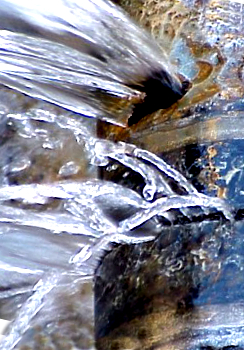Groundwater gurus push for smarter stash
 The nation’s leading water scientists are pushing for the Federal Government to take underground water storage more seriously, as future threats loom.
The nation’s leading water scientists are pushing for the Federal Government to take underground water storage more seriously, as future threats loom.
The Australian Groundwater Conference in Canberra this week has heard calls for a national underground ‘water bank’ to be created.
The experts say with vast amounts of water locked underground - a system of pumps and gauges could be used to access new flows without building expensive new infrastructure like dams.
Professor Craig Simmons, hydrologist and director of the National Centre for Groundwater Research and Training (NCGRT), says groundwater makes up over 90 per cent of Australia’s fresh water supplies.
“It is far more important than we think – but it is often poorly understood and valued. The recent Commonwealth Water Infrastructure Options Paper proposes new dams in Australia – yet all but ignores groundwater,” Professor Simmons said.
“NASA, the Bureau of Meteorology and other organisations are warning that the strengthening El Niño will bring drier, warmer weather to Australia, potentially expanding drought-affected areas..
“Yet Australia’s National Groundwater Action Plan ended three years ago.
“This is an early warning to Australians to do all we can to increase storage of water for dry times to come – and the best place to store water is underground, where evaporation is almost nil, construction costs low and environmental impact minimal.”
He said groundwater management could become a major industry.
“Groundwater provides more than 30 per cent of Australia’s total water consumption and generates national economic activity worth in excess of $34 billion a year across agriculture, mining and industry,” Professor Simmons said.
“Potentially, it is worth a lot more than this, as it will underpin our growth as a nation and an industrial economy far into the future if we manage it wisely.
“There are many ways – such as water banking, conjunctive management of surface and groundwater, monitoring, having a national plan and forum – that we can look after our national water resources far better, ensure there is enough for all uses in the future and minimise likely risks.
“But we need to refocus on water again, especially with the build-up of another major El Nino cycle.
“Frankly, water has been a low priority topic in Australia since the end of the Millennium drought, and it is high time we put it at the head of the national agenda once more, especially groundwater, which is our greatest national resource.
“It is time to end the ‘hydro-illogical cycle’ in Australia – apathy, drought, awareness, concern, panic, rain, apathy, drought…
“We need to earn the right to call ourselves true Australians by managing our water in ways decreed by the continent itself.”
The conference covered a broad range of issues facing Australia’s water industry, including;
- Plans for nationwide underground banking of water in managed aquifers
- Ways to return over-allocated groundwater to sustainable levels of extraction
- The impact of fracking, coal mining and gas extraction on Australia’s groundwater reserves
- The role of water banking for preventing water shortages in Australia’s cities The role of groundwater in a successful Murray-Darling Basin plan
- The role of groundwater in the future development of Northern Australia
- How to licence, meter and charge for groundwater extraction
- The threat from widespread illegal use of bore water
- The need to replace and repair old groundwater infrastructure, now almost half a century old and nearing the end of its useful life
- The urgency of measuring and monitoring Australia’s national groundwater resource.







 Print
Print